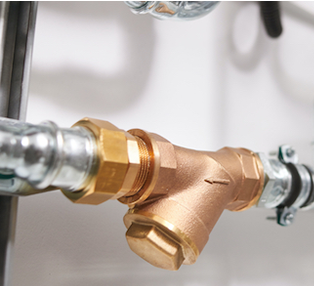Hey there, folks! Let's talk about something that might not be on your mind every day but plays a crucial role in our lives – check valves. Now, I know it's not the most exciting topic, but trust me, a little maintenance can go a long way in keeping things running smoothly.
Why Check Valves Matter
First off, you might be wondering, "What the heck are check valves, and why should I care?" Well, my friends, check valves are the unsung heroes of fluid systems. They're the gatekeepers of pipes, making sure fluids flow in the right direction. Think of them as the traffic cops of plumbing.
When fluid flows through your pipes, check valves open up to allow it to pass. But here's the nifty part – once the fluid has gone through, these smart valves close up automatically, preventing any sneaky backflow. Plus, they've got your back in case things get a bit too pressurized downstream.

Where You Find These Heroes
Check valves may not wear capes, but they do their jobs in some pretty essential places:
1. Water and Waste Pumping Systems
Yep, that's right. They're the reason your sewage system doesn't turn into a mess.
2. Water Pipes
In your home and in industries, check valves make sure your drinking water stays clean by preventing backflow.
3. Sewage Systems
Nobody wants to see sewage flowing backward. Check valves make sure that doesn't happen.
4. Heating Systems
They help maintain the flow of heating fluids in your HVAC system, keeping you warm when it's chilly outside.
5. Fire Hoses
Imagine firefighters battling a blaze without check valves. Chaos, right? These valves control the water flow during emergencies.
6. Marine and Naval Industry
Even ships rely on check valves to manage fluid flow on board.
7. Oil and Gas Pipelines
In the energy sector, check valves are the gatekeepers, preventing fluid reversal and ensuring safety.
8. Flush Toilet Mechanisms
Ever wondered how your toilet flushes effectively? Check valves are the answer.
Maintaining Your Check Valve
Now that we've established why check valves are pretty darn important, let's talk about how to keep them in tip-top shape. Remember, these little guys can last for years if you show them a little TLC.
Step 1: Keep It Clean
First things first, cleanliness is key. If you can get to your check valve, a simple wipe with a towel should do the trick to get rid of dust and dirt. But for those stubborn spots, a wire brush can be your best friend.
Step 2: Regular Check-Ins
Just like you visit the doctor for check-ups, your check valves need regular inspections too. It's an easy way to spot potential issues before they turn into full-blown problems. During your check valve check-up:
Look for any signs of leaks
Check for corrosion, rust, or mineral buildup
If you spot extensive leaks or damage, don't hesitate to replace the valve
Make sure the valve opens and closes smoothly – no one likes a sticky valve
Keep an eye on the pressure and temperature of the fluid passing through the valve, ensuring it's within the valve's rated limits
Pro Tip: If you've got high-stress or high-pressure valves, give them a bit more attention – they deserve it.
Step 3: Deep Clean
For a more thorough inspection, you might need to take your valve apart. Check for any debris or scratches on the components. Give all the parts a good wash with hydraulic fluid or whatever fluid your pipe system uses.
Inspect the valve housing for any signs of corrosion, damage, or rough surfaces. If you find rough spots, a bit of buffing can work wonders in restoring that smooth surface.
Step 4: Keep It Lubricated
Don't forget about lubrication – it's like giving your check valve a spa day. Regular lubrication can extend their lifespan and ensure they operate smoothly. Give the valve a little spin to make sure the lubricant reaches all the nooks and crannies.
Oh, and here's the catch – use the right lubricant for your system. Different systems have specific requirements, and using the wrong stuff can actually harm the valves. Avoid lubricants with clay or solid-based thickeners; they can leave behind sticky residue.
Step 5: Protect Against Temperature Extremes
Extreme temperature swings can throw your check valve for a loop. It might even lead to costly damage. If your pipes are exposed to the elements, think about adding some protective insulation as part of your regular maintenance routine.
Wrapping It Up
So there you have it, folks – the lowdown on check valves and how to keep them happy and healthy. Regular maintenance is the name of the game if you want to prevent damage and those pesky, expensive repairs.



Comments
Please Join Us to post.
0